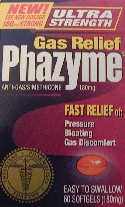|
BACK
Bloat Study - Netherlands
http://www.ncbi.nlm.nih.gov/entrez/query.fcgi?cmd=Retrieve&db=PubMed&list_uids=9699253&dopt=Abstract
http://etd02.lnx390.lsu.edu/docs/available/etd-0417102-233950/unrestricted/bibliographyLEP.pdf
Small size of food particles and age as risk factors for Gastric
Dilatation Volvulus in Great Danes.
Theyse LF, van de Brom WE, van Sluijs FJ
Faculty of Veterinary Medicine,
Department of Clinical Sciences of Companion Animals,
Utrecht, The Netherlands.
A case-control study was conducted to investigate whether age,
gender, neuter status, type of food, feeding frequency, food intake
time, interval between feeding andexercise, duration of exercise and
overall physical activity were risk factors for gastric
dilatation volvulus (GDV) in the Great Dane. The sample population
consisted of 38 Great Danes with acute GDV
(cases) and 71 Great Danes owned by members of the Dutch Great Dane
Association (controls). Information on the risk factors was collected
by using clinical data in combination with a
questionnaire, and the data were analyzed by backward stepwise
conditional logistic regression analysis. Dogs fed a diet containing
particles of food > 30 mm in size (kibble and/or dinner and/or
home-prepared food with large pieces of meat) had a lower risk of GDV
than dogs fed a diet containing only particles < 30 mm in size
(kibble or dinner and/or canned meat and/or home-prepared food cut
into small pieces or ground in a food processor). Increasing age was
also a risk factor for GDV. Gender, neuter status, feeding frequency,
food intake time, the interval between feeding and exercise, the
duration of exercise, and overall physical activity were not
identified as risk factors. Feeding a diet including large pieces of
meat may help to reduce the incidence of GDV in Great Danes.
©
Copyright 1999, all rights reserved.
|



